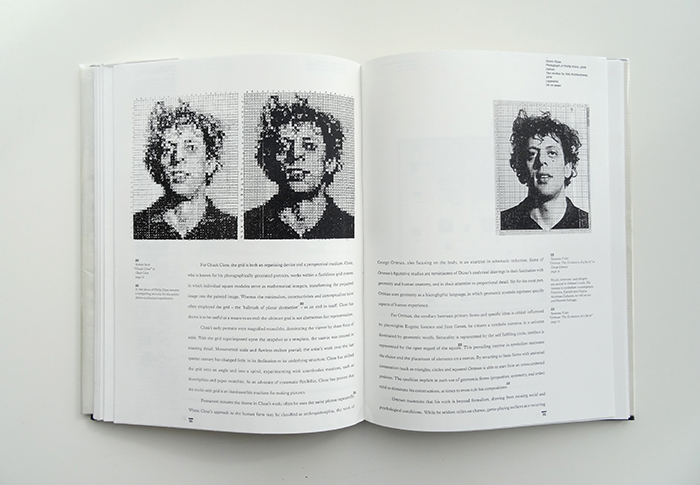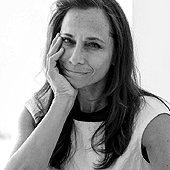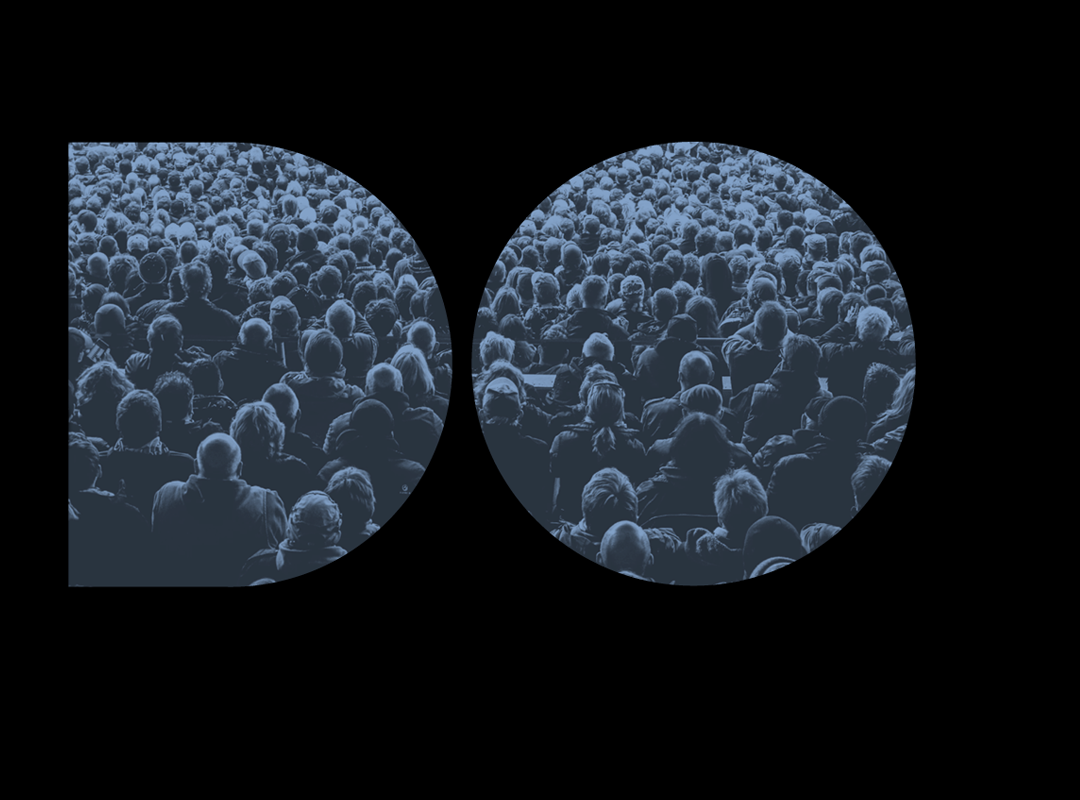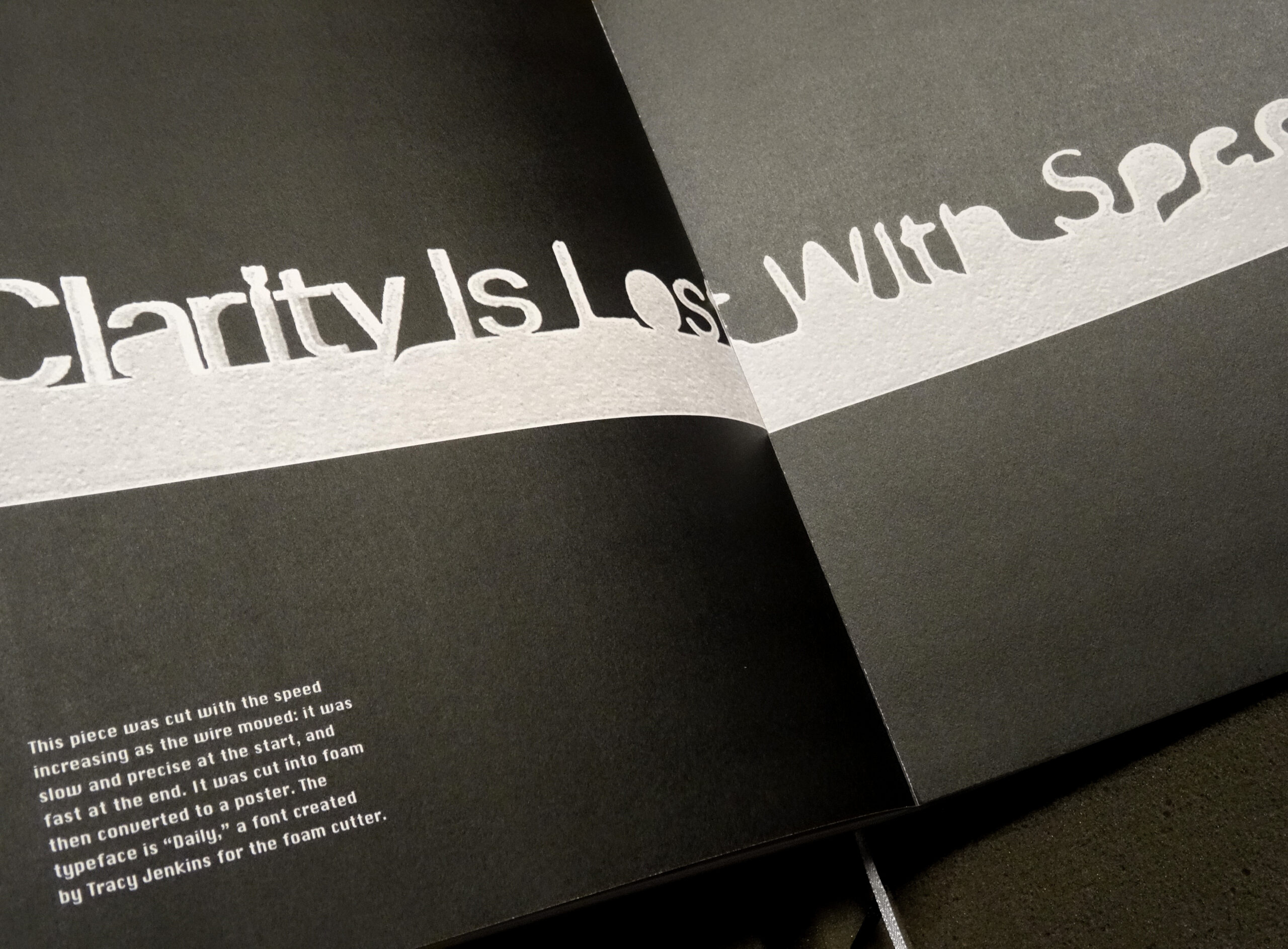
Jessica Helfand|Thesis Book Project
March 6, 2015
License to Risk: The Square Revisited

Spread from License to Risk: The Square Revisited, 1989
In ancient cultures, primary shapes were explicit in their symbolism. They were cherished for their purity, implemented formally and frontally in art and in architecture as a gesture to heavenly spirits and celestial bodies. They were sacred forms, secular shapes with religious associations. In the Renaissance, the circle was heralded as the most culturally significant shape, whereas by the Seventeenth Century, the precise angularity of the equilateral square had emerged as the visual embodiment of logic—logic that would find its most vivid expression with the evolution of the Cartesian grid. By the Twentieth Century, the square had become the unrivaled emblem of the technological age.
Of the three so-called “primary” forms, the square is the most practical and the most economical. It has formed the basis for the pyramids, for the golden section, and for the Cartesian grid. It has provided the armature for the Roman alphabet, for the Chinese alphabet and for countless studies in human proportion. Without it, there would be no Constructivism and no Suprematism. There would be no Broadway Boogie Woogie and no Villa Savoie. There would be no dice, no record albums, no crossword puzzles. At the very least, Josef Albers would have had nothing to pay homage to and we would find ourselves puzzling away at how to play chess on a polka dotted board.
If the square is, as Buckminster Fuller said of the grid, a “Cartesian straitjacket”, it is this seemingly rigid structure which has generated both flexibility and freedom for some two thousand years. While its roots lie in classical civilization, the square has come to represent the very essence of modernism. At once neutral and dynamic, engaging yet enigmatic, the square represents the ultimate simplicity of structure: unwavering in its equilateral sides and angles, enclosed and fixed and predictable, it is in fact this tangible, reliable configuration which provides the artist with reason, with reality, with license to risk.
Excerps from License to Risk: The Square Revisited, submitted in partial fulfullment or the degree Master of Fine Arts, Yale University School of Art, 1989
++
So, let’s start with the fact that it was photocopied. Add to that the fact that it was “created” on a Mac SE, the type “output,” and yes, sliced and waxed and placed on boards using a T-square. (Cue the dinosaurs!) Footnotes—also waxed—were then added, and the whole thing was put in a large box and shlepped on down to a copy shop where each board was placed on a Xerox machine, massive sheets of Mohawk Superfine painstakingly hand-fed, one at a time, in a physical gesture that perhaps more closely resembled technological midwifery than actual book production.
The whole thing was draconian. And yet, that was how we did it back in 1989, the year the Berlin Wall came down, Gorbachev was elected, and Tim Berners-Lee proposed something that would soon be called the World Wide Web. Looking at my thesis book now, the word “primitive” comes to mind. (Also: “lame.”) Yet what I lacked in production values I more than compensated for by sheer perseverence. I’d spent a year of my life wondering why squares mattered, and here I was, nearly two hundred pages later, the self-proclaimed expert on a subject few people besides me cared about.
Equally committed to perseverance, today’s students are making work rich in scope and content, method, and motive. How fortunate that despite the changes in pedagogy and technology (and the wonders of copy shops) books have endured: they’re still the desired receptacle for a uniquely impassioned year of effort. This is why we’ve started The Thesis Book Project: to celebrate students and their books. Just not, blessedly, their waxers.
Next week: RiSD interim dean Nancy Skolos shares her 1979 thesis book, titled: Translating Music Events into Visual Imagery
Observed
View all
Observed
By Jessica Helfand
Recent Posts
‘The conscience of this country’: How filmmakers are documenting resistance in the age of censorship Redesigning the Spice Trade: Talking Turmeric and Tariffs with Diaspora Co.’s Sana Javeri Kadri “Dear mother, I made us a seat”: a Mother’s Day tribute to the women of Iran A quieter place: Sound designer Eddie Gandelman on composing a future that allows us to hear ourselves think
 Jessica Helfand, a founding editor of Design Observer, is an award-winning graphic designer and writer and a former contributing editor and columnist for Print, Communications Arts and Eye magazines. A member of the Alliance Graphique Internationale and a recent laureate of the Art Director’s Hall of Fame, Helfand received her B.A. and her M.F.A. from Yale University where she has taught since 1994.
Jessica Helfand, a founding editor of Design Observer, is an award-winning graphic designer and writer and a former contributing editor and columnist for Print, Communications Arts and Eye magazines. A member of the Alliance Graphique Internationale and a recent laureate of the Art Director’s Hall of Fame, Helfand received her B.A. and her M.F.A. from Yale University where she has taught since 1994.


